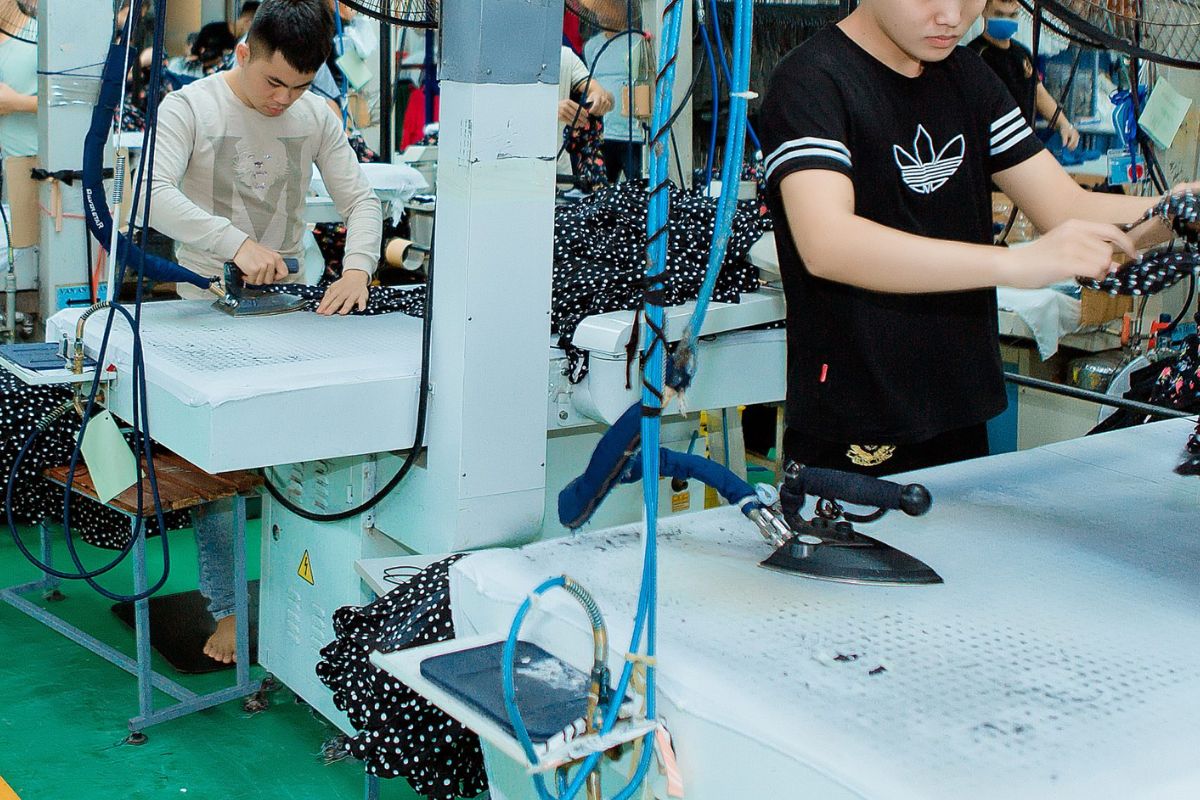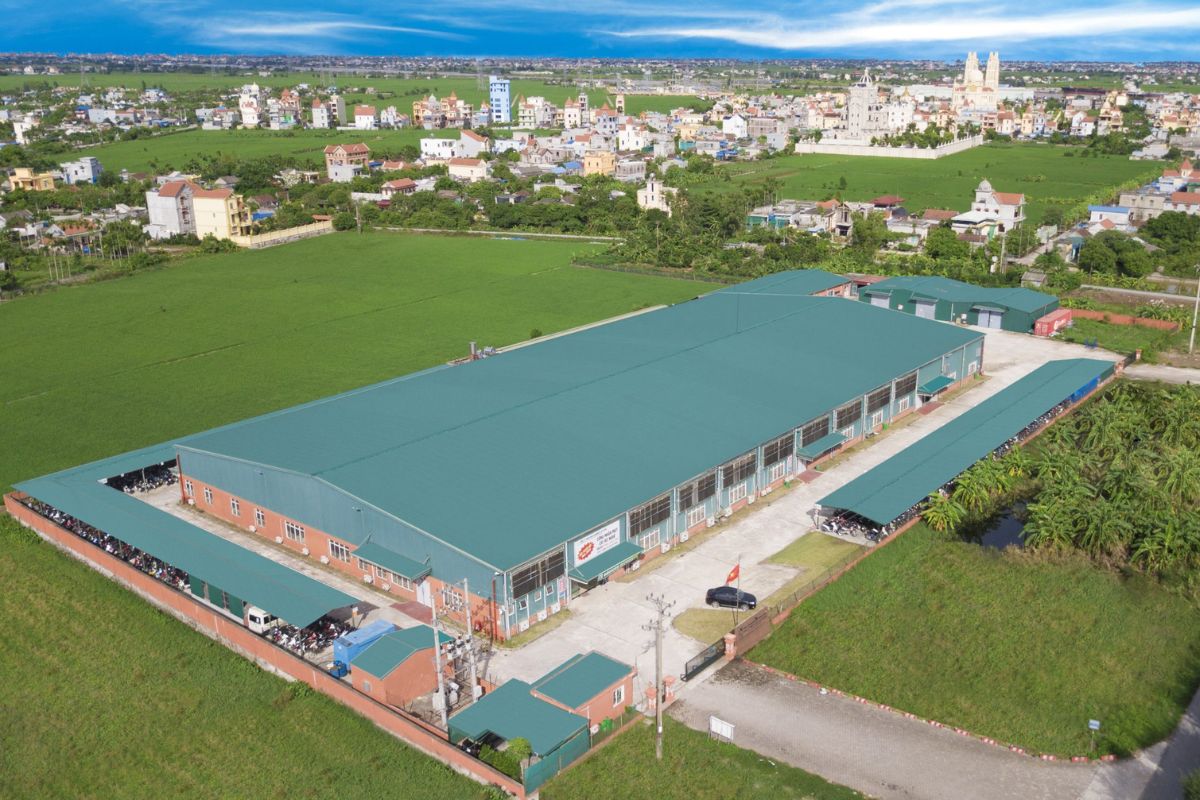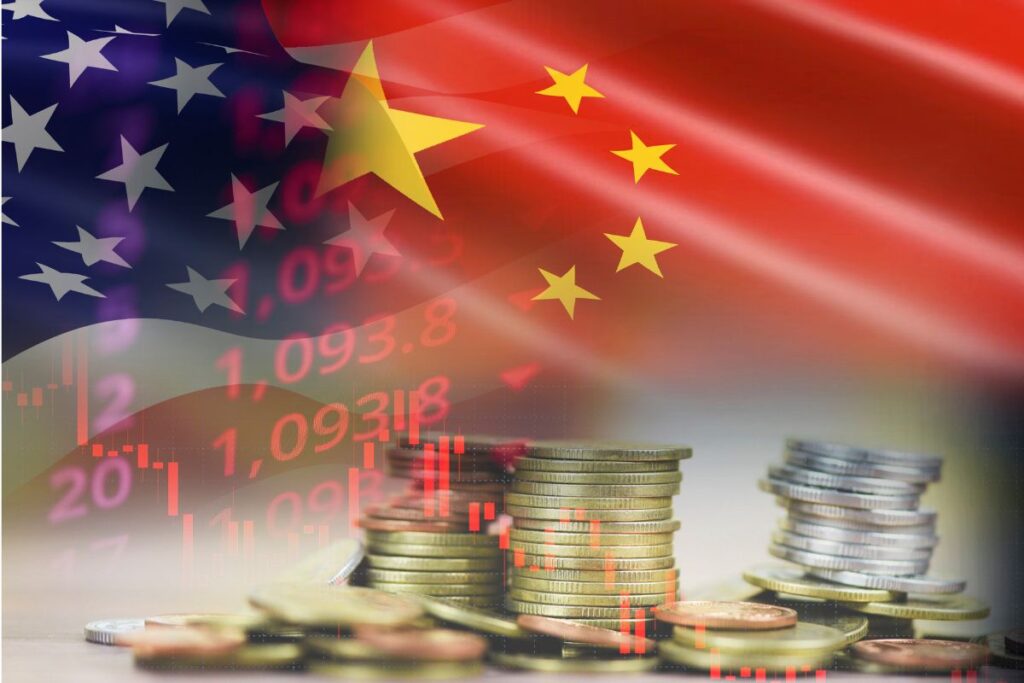The US-China trade war has unsettled supply chains worldwide, driving tariff levels and disrupting trade flows. Apparel has been among the hardest-hit sectors, as every garment factory that depends on cross-border sourcing now faces higher costs and shifting production strategies.
The impact of the US-China trade war has not been limited to Washington and Beijing. Higher tariff costs are filtering down to consumers and unsettling global trade. In this environment, Vietnam has drawn greater attention from sourcing teams. With a stable economy and expanding garment factory capacity, Vietnam’s garment manufacturers are becoming reliable partners for brands looking to reduce dependence on China and secure a steady supply.
Overview of the US-China trade war
The trade war between the US and China, the two countries that ranked in top 10 clothing manufacturing countries, has began in 2018 with an initial 25% tariff on Chinese goods, and it only intensified in subsequent years. What started as a dispute over trade imbalances and technology transfer quickly became a prolonged confrontation that unsettled global supply chains. Labor-intensive sectors, particularly apparel and footwear, were hit early as duties pushed up import costs for products that had long relied on China’s scale and efficiency.
According to CNN, in April 2025, the US-China trade war reached a peak when The United States raised tariffs on Chinese imports to 145%, and China responded with 125% duties on American goods. These extreme rates cut into business margins and lifted retail prices, straining both companies and consumers. Manufacturers that relied on cross-border parts also saw production expenses climb sharply, forcing some to rethink sourcing strategies.
The World Trade Organization estimated the fallout would trim global merchandise trade by 0.2% in 2025. As of August 27, US duties on Chinese exports averaged 57.6%, while China’s stood at 32.6%. Even at these revised levels, the dispute continued to weigh on profitability and limit growth in global trade, creating ripple effects across supply chains and highlighting the need for alternatives, such as garment manufacturers from the third countries.
These third countries felt the impacts sharply. Exporters tied to raw materials and intermediate goods faced shrinking demand as production costs rose in both the U.S. and China. Regional suppliers dependent on cross-border inputs also saw their margins narrow, while consumer markets endured higher prices. That said, some producers gained opportunities as brands shifted sourcing to avoid escalating tariffs.
Vietnam’s role in the US-China trade war
Vietnam, one of the competitive clothing manufacturing countries, has become stronger as the trade conflict reshape global sourcing patterns. Its garment industry has become central to this shift.
The potential garment manufacturing hub
Many companies have adopted a China plus one strategy, diversifying production beyond China to mitigate risk. Vietnam has quickly become the leading alternative hub. It is now the world’s second-largest exporter of textiles and garments, showing how far its supply chain has advanced in just a few years. Export performance reflects this momentum: by May 2025, Vietnam’s textile and garment shipments reached $17.58 billion, a 9% increase compared with the previous year.
Global brands are reinforcing the trend. Nike, Adidas, and Uniqlo have all built strong sourcing relationships in Vietnam, valuing its reliability and competitive costs. With average labor expenses of about $3 per hour versus $5 in China, the country holds a clear advantage in labor-intensive manufacturing.

At the same time, Vietnam is expanding garment factory capacity through new facilities and modern industrial zones. This growth and a skilled workforce enable manufacturers to handle orders redirected from China. As a result, many global firms are partnering with Vietnamese textile manufacturers to safeguard supply chains and maintain production stability during uncertain trade conditions.
Experience dynamic shifts
Recent trade agreements have strengthened Vietnam’s role in apparel sourcing. The EU–Vietnam Free Trade Agreement (EVFTA) allows near-zero duties on clothing shipped to Europe, cutting costs for brands. Through the Comprehensive and Progressive Agreement for Trans-Pacific Partnership (CPTPP), Vietnam also gains access to partners such as Canada, Japan, and Australia. These deals lower tariff barriers and make Vietnam’s garment manufacturers more competitive in global trade, attracting brands that want stable, cost-effective production outside China.
In July 2025, General Secretary To Lam and US President Donald Trump agreed to cut US tariffs on Vietnamese exports from 46% to about 20%, with apparel at 20–25%. This deal improved access to the American market and reinforced Vietnam’s role as a key sourcing base. These measures strengthen Vietnam’s garment manufacturers and expand garment factory networks.
Many garment producers in Vietnam that once focused only on Original Equipment Manufacturing (OEM) now offer Original Design Manufacturing (ODM), giving buyers design input and production. At the same time, factories are putting money into greener operations, using less water, reducing waste, and meeting international audit standards. These steps show how Vietnamese garment manufacturers are adapting to new market expectations.
The other aspects being introduced on factory floors to improve efficiency, quality, and scalability are digital tools and automation. Major infrastructure upgrades in ports and industrial zones are now meant to expand capacity for rising export volumes. Even niche players, such as Kiara Garments of Capital World Group, one of the leading women’s clothing manufacturers in Vietnam, are embracing these advances to meet international expectations.
Learn more about The differences between OEM vs. ODM vs. Private Label for your garment production.

Capital World Group serves global apparel brands seeking a reliable Vietnam garment manufacturer. Furthermore, Capital World Group provides design development, sampling, scalable runs, certified fabrics, and end-to-end logistics. This integrated approach helps cut costs, shorten lead times, and align production with global compliance benchmarks, building a supply chain that balances speed, quality, and responsibility.

